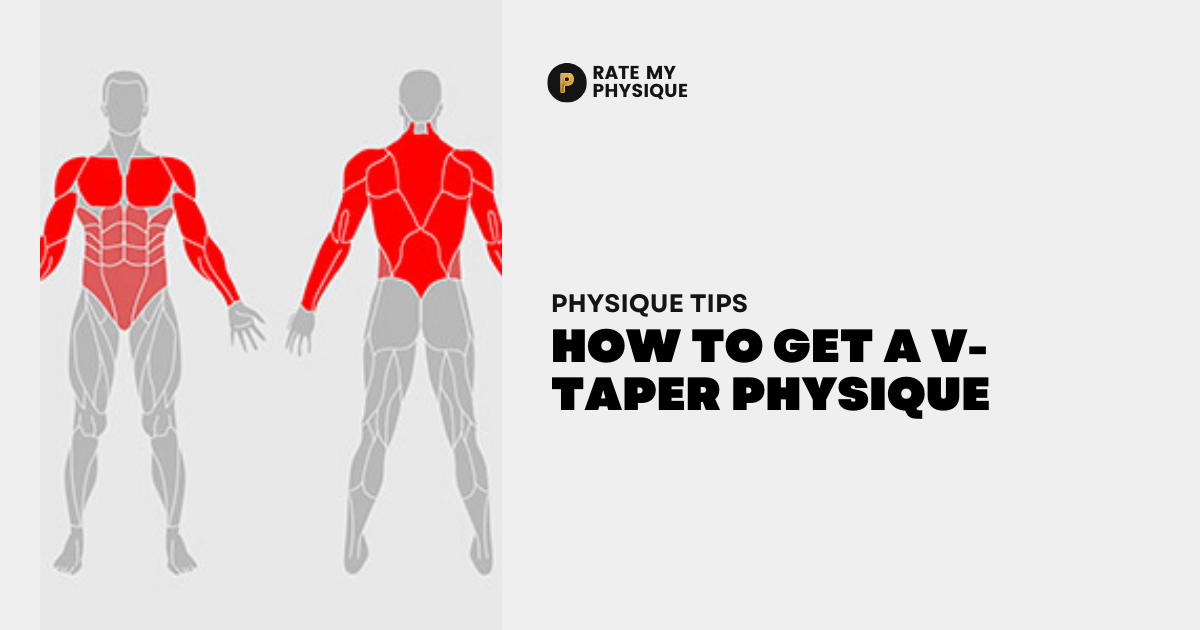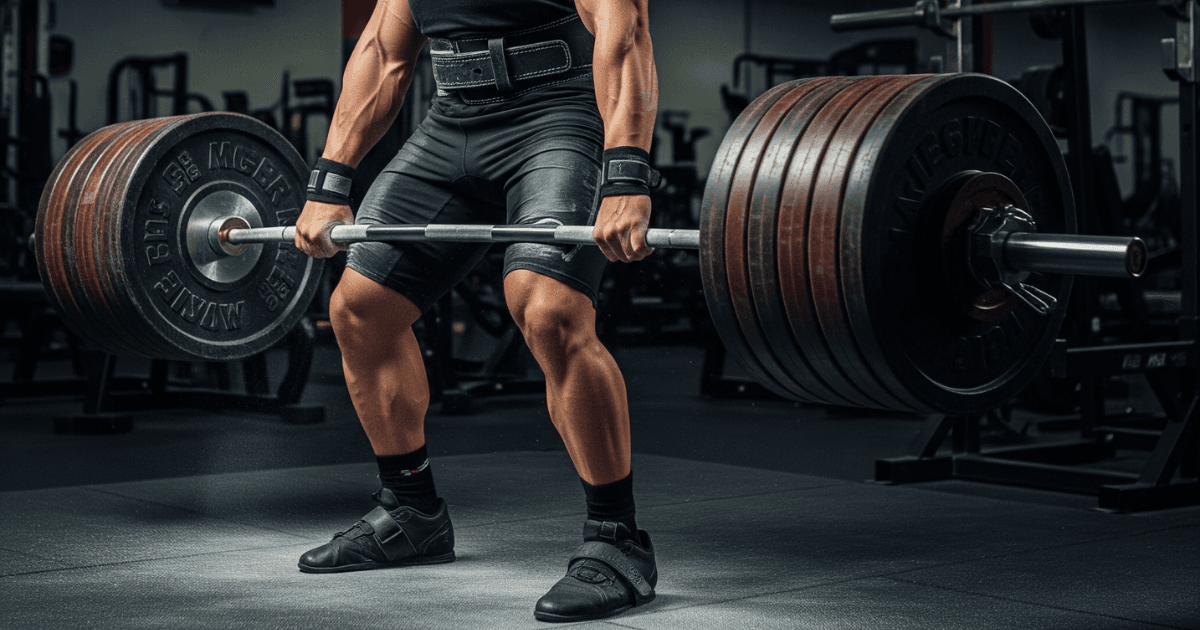
Liam Parker
•
February 12th 2025
How to Get a V-Taper Physique: The Science Behind the Ideal Body Shape
The V-taper physique is often seen as the epitome of a well-proportioned, athletic body. With broad shoulders, a narrow waist, and a strong upper body, this shape not only looks impressive but is also a symbol of health, fitness, and strength. Many people strive to achieve this physique, but how can you make it happen? Is it simply about lifting weights and eating right, or is there more science behind it? In this post, we’ll dive into the science of achieving a V-taper physique and provide actionable tips to help you reach your fitness goals.
What is a V-Taper Physique?
A V-taper physique refers to a body shape where the upper body is wider than the waist, creating a "V" shape. This shape is typically characterized by broad shoulders, a developed back, and a slim, toned waistline. The ideal V-taper is often seen in bodybuilders and athletes but can be achieved by anyone with the right training and nutrition.
The Science of Building a V-Taper Physique
Achieving a V-taper physique is more than just aesthetics—it's about balancing muscle development and fat distribution in a way that creates an hourglass figure. Here are the key scientific principles behind the V-taper shape:
1. Shoulder Development
Broad, muscular shoulders are the hallmark of a V-taper physique. The deltoid muscles, located at the top of your shoulders, play a crucial role in achieving this look.
Scientific Insight: The shoulder muscles consist of three parts: the anterior (front), lateral (middle), and posterior (rear) deltoids. By focusing on exercises that target all three heads of the deltoid, you can create broader, more defined shoulders. Lateral raises and overhead presses are particularly effective for developing the middle deltoid, which adds width to your shoulders.
2. Upper Back and Lats
A key component of the V-taper physique is a well-developed upper back, especially the latissimus dorsi muscles (or "lats"). These muscles help create the appearance of a broader back and a smaller waist.
Scientific Insight: The lats are large, fan-shaped muscles that extend from the lower back and spread out across the back. Exercises like pull-ups, lat pulldowns, and rows engage the lats and help create that wide, "V" shape. Strengthening the lats also improves posture, which further enhances the appearance of a V-taper.
3. Waist Reduction
A narrow waist is essential for accentuating the V-taper. Achieving a slim waist involves reducing body fat and building muscle definition, particularly around the abdomen.
Scientific Insight: To achieve a slim waist, you need to lower your body fat percentage through a combination of diet and cardiovascular exercise. Research shows that a caloric deficit (burning more calories than you consume) is the most effective way to lose fat. Additionally, core exercises like planks and leg raises can help tone the abdominal muscles, further emphasizing the V-taper.
4. Body Fat Distribution
Genetics play a significant role in how and where your body stores fat. Some people naturally carry more fat around their waist, while others accumulate fat in different areas. However, it’s possible to lose fat from the waistline through consistent exercise and nutrition.
Scientific Insight: Spot reduction, or the idea of targeting fat loss in specific areas, is a myth. However, overall body fat reduction will lead to fat loss around your midsection. Studies show that combining strength training with cardiovascular exercises (like running, cycling, or swimming) is the most efficient way to reduce body fat and reveal the muscle definition that enhances the V-taper look.
How to Train for a V-Taper Physique
Achieving a V-taper physique requires a combination of strength training, cardio, and a focus on fat loss. Here’s a training plan designed to target the key areas that contribute to the V-taper:
1. Shoulder Exercises
Focus on exercises that target all three heads of the deltoid:
- Overhead Press: Targets the front and middle delts.
- Lateral Raises: Isolates the middle delts to create width.
- Rear Delt Flys: Develops the rear delts, improving shoulder balance.
2. Back Exercises
Strengthening the lats and upper back is essential for creating a wider, more defined back.
- Pull-Ups/Chin-Ups: One of the best exercises for lat development.
- Lat Pulldowns: Targets the lats, especially if you’re unable to do pull-ups yet.
- Bent-Over Rows: Works the middle back and helps with overall back thickness.
- Face Pulls: Excellent for targeting the rear delts and upper traps.
3. Core Exercises
A strong core is important for maintaining a narrow waistline. While you can't spot-reduce fat, strengthening your core will help define your abdominal muscles once the fat is gone.
- Planks: A great all-around core exercise.
- Leg Raises: Targets the lower abs.
- Russian Twists: Engages the obliques for a more defined waist.
4. Cardio
To reduce body fat, incorporate cardiovascular exercise into your routine.
- HIIT (High-Intensity Interval Training): Effective for fat loss and improving cardiovascular fitness in a short amount of time.
- Steady-State Cardio: Activities like running, cycling, or swimming for 30-45 minutes at a moderate intensity can help with fat loss.
Nutrition for a V-Taper Physique
Achieving a V-taper physique isn’t just about lifting weights and doing cardio; diet plays a crucial role. To achieve a narrow waist and lean body, focus on the following:
1. Caloric Deficit
To lose fat, you need to consume fewer calories than your body burns. Use a calorie tracking app to monitor your intake and ensure you’re in a slight deficit (around 10-20% fewer calories than your maintenance level).
2. Protein Intake
Protein is essential for muscle growth and recovery. Aim to consume 1.6-2.2 grams of protein per kilogram of body weight. This helps build and repair muscle, which is crucial for a V-taper physique.
3. Healthy Fats and Carbohydrates
Include healthy fats from sources like avocados, nuts, and olive oil to support hormone production and overall health. Carbohydrates are important for fueling workouts, so make sure to include complex carbs like whole grains, vegetables, and fruits.
Conclusion
Achieving a V-taper physique requires a combination of strength training, fat loss, and proper nutrition. The science behind creating broad shoulders, a narrow waist, and a muscular back involves targeting specific muscles and reducing body fat. By following a structured training plan, prioritizing recovery, and staying consistent with your diet, you can sculpt a V-taper physique that not only looks great but also reflects strength and dedication.
Remember, the journey to a V-taper physique takes time, but with the right approach, you’ll start seeing significant improvements and results. Keep pushing, and embrace the process!



